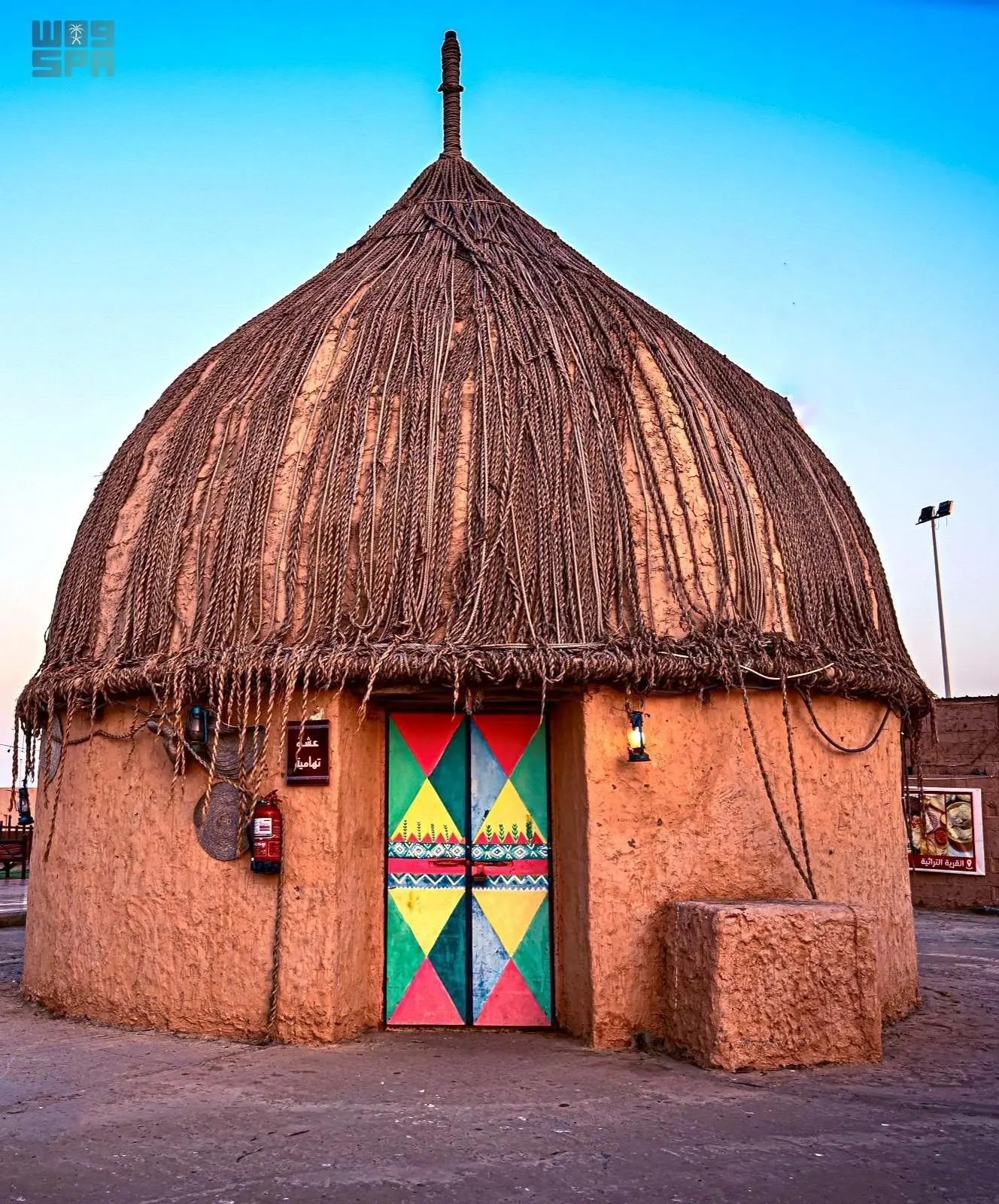
Jazan Hut: Traditional Palm-and-Earth Architecture Reimagined for Modern Tourism
Along the coastal plains of Jazan Region, where the sea meets the palm trees, the traditional Jazan hut stands as a proudly simple structure woven from palm fronds and the labor of skilled hands, symbolizing an identity deeply rooted in history and reflecting the profound connection between the people and their environment, embodying the concept of a house of straw and mud.
Nature plays a fundamental and beautiful role in its construction. The people of Jazan drew everything they needed from their surroundings, using palm fronds and branches to build the walls and roof, prized for their strength, durability, and resistance to the elements. Branches of acacia, jujube, and doum palms were strategically employed to reinforce the pillars and corners, taking advantage of the inherent strength of these trees across the coastal plains. Inside, the floor was covered with a distinctive layer of mud and fine sand, providing natural coolness during the day and warmth at night.
Despite the development of urban planning and the changing aspects of modern life, the Jazan hut remains a recognizable feature of the region. Today, it has experienced a modern revival, appearing in contemporary forms at festivals, popular cafes, and tourist resorts. These modern iterations are often decorated with heritage colors, handmade mats, and traditional incense burners, allowing the hut to continue telling the story of the people who created beauty from simplicity and connecting new generations to their ancestral culture.








